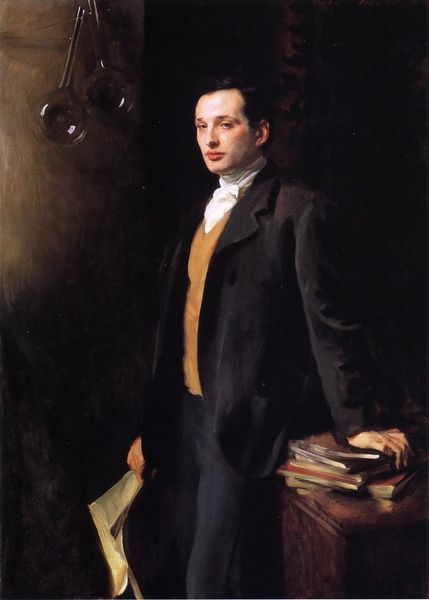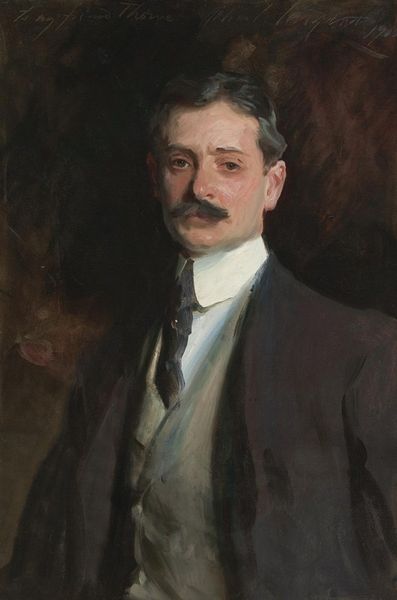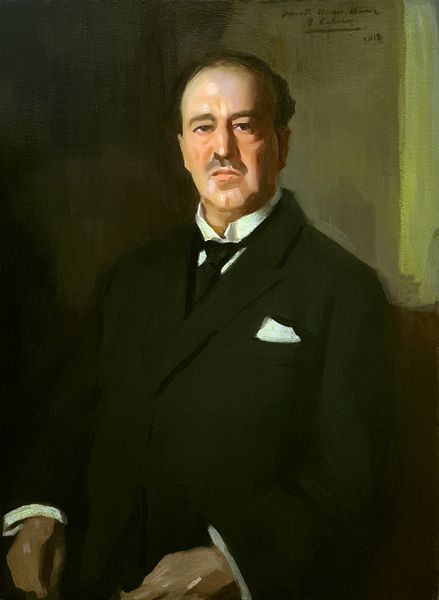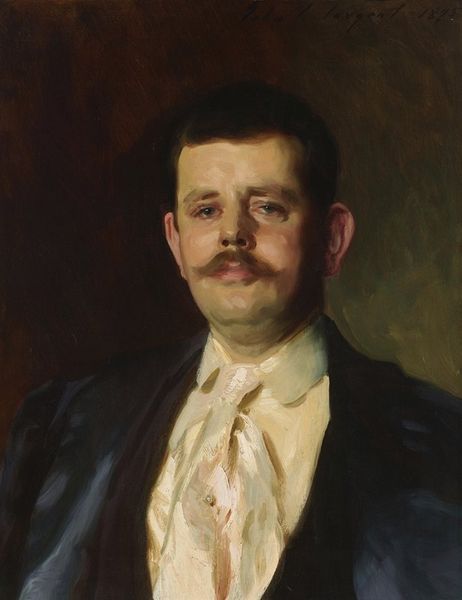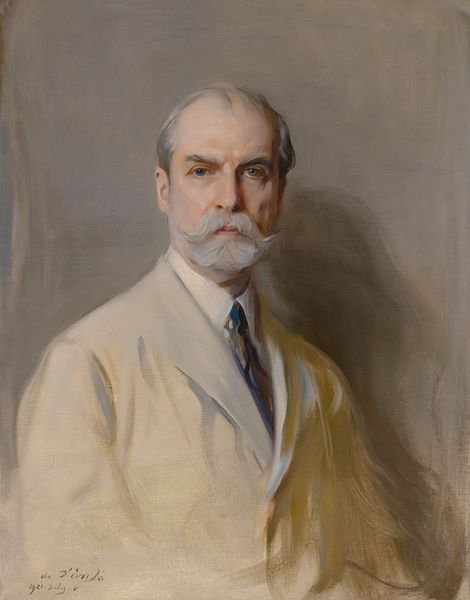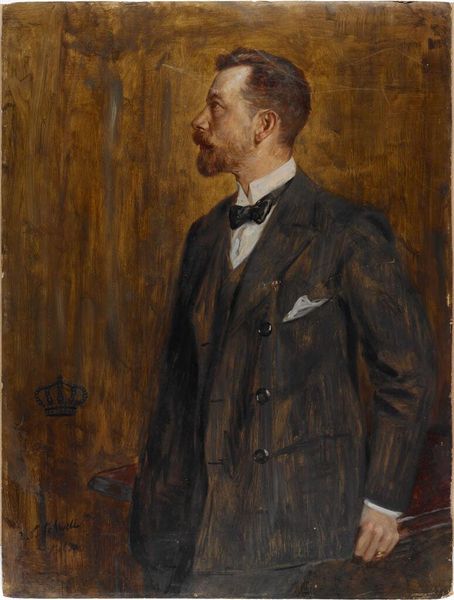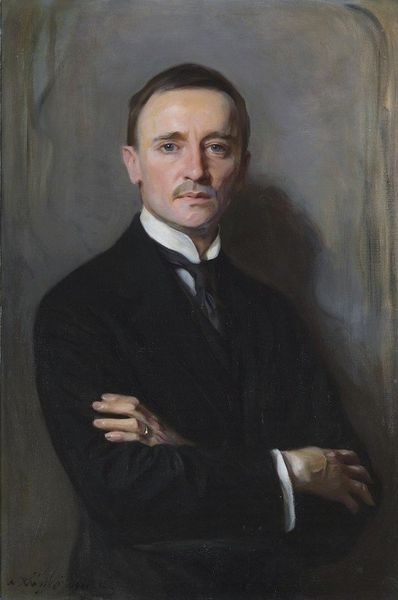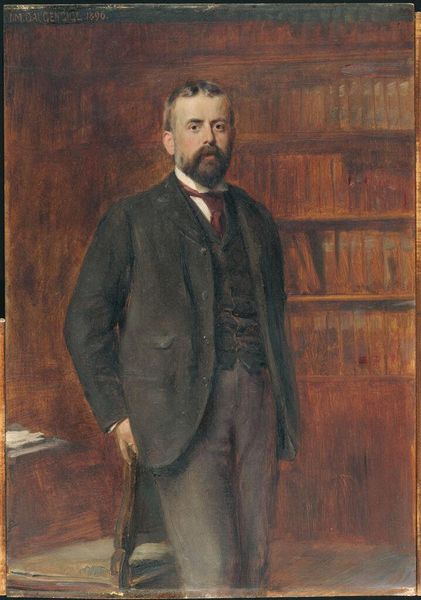
painting, oil-paint
#
portrait
#
portrait
#
painting
#
oil-paint
#
academic-art
#
modernism
#
realism
Copyright: Public Domain: Artvee
Editor: We're looking at John Singer Sargent’s “Cornelius Vanderbilt II,” painted in 1890. It's an oil painting. There’s something very self-assured about his gaze; maybe even a hint of… boredom? What do you see in this piece? Curator: Oh, Sargent always captures something just beneath the surface, doesn’t he? I find this portrait a fascinating window into the Gilded Age. Here’s a man practically drowning in wealth, yet Sargent paints him with this incredible restraint. He doesn’t flaunt jewels or opulent settings. Instead, we get a rather somber palette, an almost…intimate portrayal. Does the stark simplicity contrast with your expectation? Editor: It does. I suppose I expected…more? Is it maybe a subtle commentary on the hollowness of wealth? Curator: Precisely! The tightly pursed lips, the carefully controlled expression—Sargent hints at the immense pressure and expectations weighing on Vanderbilt. He isn’t just painting a man; he’s painting a dynasty. Notice how the light catches his brow and eyes. It draws your attention to the parts that most project humanity. He still comes across with that Vanderbilt aura, that sense of dynastic inheritance, and with its burdens. What are your thoughts about it now? Editor: I never considered the psychological weight that might be subtly hinted at, it adds a whole new layer to the reading of his stare. It’s more compelling than I first thought. Curator: Absolutely! And that, my dear student, is the magic of art, isn't it? We see a surface, and then, with a little digging, a whole universe unfolds. Editor: It definitely does, I'll try to keep an open mind next time. Thanks for the insights!
Comments
No comments
Be the first to comment and join the conversation on the ultimate creative platform.
